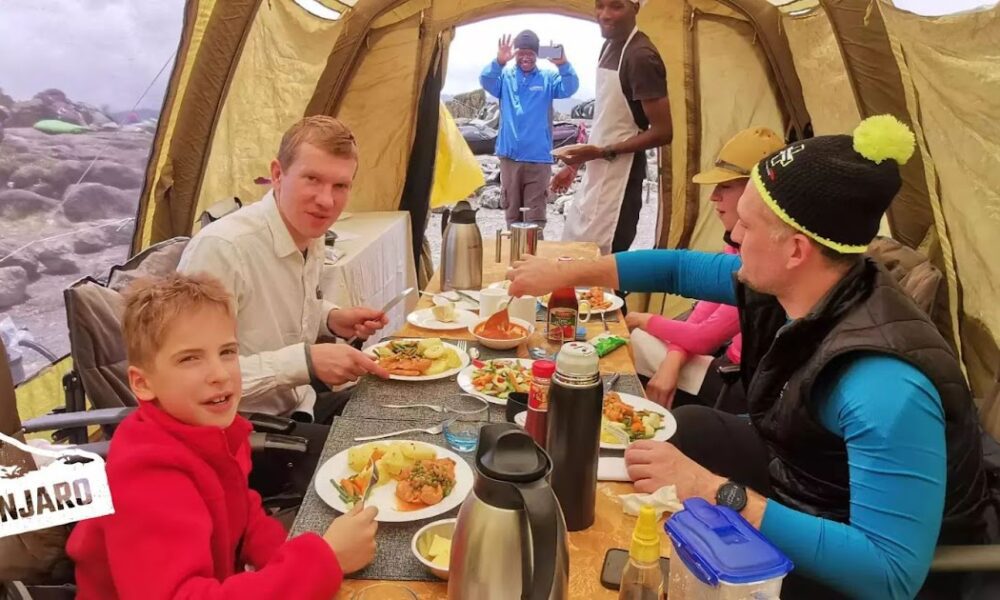Kilimanjaro: Innovation and Strategy on Africa’s Highest Peak

Adventure travel is one of the fastest-growing sectors in global tourism, and at its centre stands Mount Kilimanjaro, Africa’s highest mountain at 5,895 metres. For investors, entrepreneurs, and tech innovators, the mountain is more than a natural wonder: it is a fascinating example of how design thinking, efficiency, and premium product positioning can transform a timeless challenge into a successful industry.
Unlike other Seven Summits, Kilimanjaro requires no ropes or technical mountaineering skill, making it accessible to a broad consumer base. Yet accessibility alone does not guarantee success. To climb Kilimanjaro safely and successfully requires structured planning, innovative logistics, and careful market differentiation — precisely the factors that set industry leaders apart.
Time as a Success Factor
A core market question is how long does it take to climb Kilimanjaro. Technically, the mountain can be climbed in as few as five days, but such short itineraries have poor success rates due to altitude sickness. Consumers who fail to summit leave with negative experiences, reducing lifetime brand equity.
The data shows that seven to nine days is the optimal timeframe, allowing for gradual acclimatisation and consistently higher success rates. The lesson for entrepreneurs is clear: designing for sustainable outcomes often requires rejecting “shortcuts” that appear efficient in the short term but undermine long-term results.
Route Innovation: Eliminating Inefficiency
Traditional routes like Machame and Umbwe contain inefficiencies — for example, a 401-metre gain that is immediately lost into Karanga Valley. This is the equivalent of a business model with redundant processes.
Team Kilimanjaro’s TK Lemosho Route represents a process innovation. By streamlining elevation profiles and reducing congestion, it creates a smoother customer journey, improves summit rates, and enhances overall satisfaction. For premium clients, the Excel Extension provides a unique “add-on product”: the option to spend a night inside the summit crater at 5,729 metres, a rare and exclusive upgrade that differentiates the brand.
Timing the Market
Market timing is as crucial in adventure travel as in technology launches. The best time to climb Kilimanjaro is during the dry months of January to March and June to October. These “peak demand” seasons offer stable weather and predictable logistics, much like releasing a new product into a receptive market.
Climbers who choose the rainy months of April–May or November are effectively early adopters in a more volatile environment: the trails are quieter and the experience more niche, but the risks higher. This segmentation illustrates how consumer appetite for adventure varies, and how operators must design offerings for both mainstream and niche audiences.
Support Models as Product Tiers
In any market, tiered offerings allow companies to reach multiple customer segments without diluting brand identity. Team Kilimanjaro exemplifies this with seven distinct “support series.”
- The Advantage Series, chosen by around 70 percent of clients, functions as the balanced mid-tier product: fresh food, private toilets, and mess tents delivering comfort without overindulgence.
- The Superlite Series is the stripped-down version, appealing to minimalist adventurers who want autonomy.
- The Hemingway Series is the luxury tier, offering VIP service and exclusivity for high-net-worth clients.
This tiered approach mirrors SaaS models or consumer electronics product lines: one core system, delivered in multiple configurations to meet different consumer values and budgets.
Sustainability and Ethics
In today’s market, brand value depends heavily on ethical standards. Kilimanjaro climbs require guides and porters, and the treatment of these workers is a decisive factor for reputational integrity. Team Kilimanjaro prioritises porter welfare, proper load management, and fair wages — practices that parallel the corporate world’s emphasis on ESG compliance.
Equally critical is the environmental dimension. Kilimanjaro’s glaciers, once expansive, have retreated dramatically in recent decades. For climbers, they are a vanishing attraction; for scientists, they are a warning sign. For operators, responsible messaging around climate impact both informs customers and reinforces brand trust.
Preparation: The Consumer Responsibility
Just as tech adoption depends on user readiness, climbing Kilimanjaro requires consumer preparation. Training hikes, cardio fitness, and layered gear are prerequisites for performance. Hydration and nutrition are essential for acclimatisation, much like adequate bandwidth and processing power are essential for software performance.
By framing preparation as part of the customer journey, operators manage expectations, reduce failure rates, and ensure greater satisfaction.
The Summit: Delivering the Promise
Every product experience has a peak moment — the feature, event, or reveal that defines it. On Kilimanjaro, that moment is summit night. Climbers set out at midnight, walking six to eight hours in freezing air before arriving at Uhuru Peak at sunrise. The reward is extraordinary: glaciers glowing in dawn light and endless views over East Africa.
Delivering on that promise is the operator’s ultimate responsibility. When it succeeds, it creates lifelong memories and powerful brand advocacy.
Beyond the Summit
The Kilimanjaro journey does not end with the summit. Many clients extend their adventure with safaris in the Serengeti or cultural experiences in Zanzibar. These “add-on modules” create bundled experiences, increasing customer value and strengthening the destination’s ecosystem.
For the adventure travel industry, this is a reminder that upselling is not about pushing products but about enhancing stories. Each extension enriches the client’s narrative, building deeper loyalty.
Final Reflection
Mount Kilimanjaro is more than a mountain; it is a case study in how innovation, structure, and ethical responsibility can elevate a product into an enduring global experience.
By focusing on design efficiency — knowing how long does it take to climb Kilimanjaro, selecting the best time to climb Kilimanjaro, and adopting routes like TK Lemosho — Team Kilimanjaro has positioned itself not only as an expedition provider but as an industry leader.
For entrepreneurs, investors, and innovators, the lesson is clear: whether building a company or summiting a mountain, success belongs to those who combine vision, timing, and design with an unwavering respect for the people and environments that make the journey possible.

Source: Kilimanjaro: Innovation and Strategy on Africa’s Highest Peak


